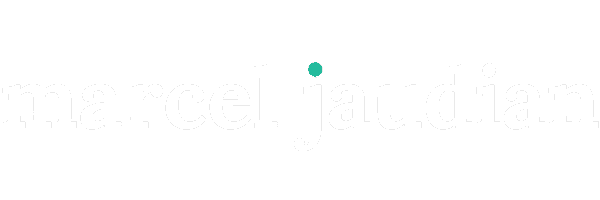Struggling with low conversion rates? Your copy might be to blame.
You put in the work—driving traffic, optimizing your website, and promoting your offers—but when it comes time for visitors to take action, they just won’t.
So, what’s up with that?
The issue isn’t your product or service—it’s your presentation. Your conversion rate, the percentage of visitors who complete a desired action, is a direct reflection of how well your message resonates with your audience. If people aren’t clicking, signing up, or buying, your copy is not doing its job.
It’s easy to assume the problem is traffic, but even with the right audience, weak or unclear messaging can hold your business back. Whether it’s a vague value proposition, a lackluster call to action, or copy that doesn’t connect emotionally, the wrong words can cost you conversions.
The good news? You can fix this. With the right copywriting strategies, you can turn visitors into customers and start seeing real results. In this post, we’ll explore how great copy can boost your conversion rates and bottom line.
Understanding the Conversion Problem
What Is a Low Conversion Rate?
Your website might be getting plenty of traffic, but if visitors aren’t taking action—whether it’s making a purchase, signing up for your email list, or booking a call—you have a low conversion problem.
A conversion rate is the percentage of visitors who complete a desired action on your site. For example, if 1,000 people visit your landing page and only 10 sign up for your offer, your conversion rate is just 1%. The higher your conversion rate, the more effective your website is at turning visitors into customers.
So, how do you know if your conversion rate is too low without seeing the data? Here are some common red flags:
- High traffic, low sales – Plenty of people visit your site, but few actually buy.
- Abandoned carts – Shoppers add items to their cart but never complete the purchase.
- Low engagement on CTAs – Visitors ignore or scroll past your calls to action.
- Short session durations – People leave your site quickly, without exploring further.
- Low lead form submissions – Few visitors sign up for your email list or contact you.
If any of these sound familiar, your website could be suffering from weak or ineffective copy.
The Role of Copywriting in Conversions
Copywriting isn’t just about filling your website with words—it’s about guiding visitors toward action. Strong copy connects with your audience, builds trust, and makes it clear why they should choose you.
On the other hand, weak copy can be a major conversion killer. Here’s how poor messaging is driving your customers away:
Unclear value proposition
If your message is unclear, visitors won’t take the time to figure it out—they’ll just leave. A vague or confusing value proposition makes it difficult for people to understand why your offer matters to them. If they don’t see the benefit, they won’t feel compelled to stick around.
Lack of urgency
If your copy doesn’t create a sense of “now is the time to act,” visitors may decide to put off their decision. And as we all know, later often turns into never. Similarly, weak or confusing calls to action can cause hesitation. If your CTA is too generic, hidden, or uninspiring, people won’t feel motivated to take the next step.
No emotional connection
People make decisions based on how they feel, and if your copy doesn’t tap into their pain points, desires, or aspirations, they won’t feel that personal connection. Good copy speaks directly to the reader, making them feel seen and understood—bad copy makes them feel indifferent.
The right words can mean the difference between a visitor clicking away and a visitor becoming a loyal customer.
How Great Copy Can Fix Low Conversion Rates
Clarifying the Value Proposition
Great copy removes confusion and instantly tells potential customers why they should care. It’s not enough to describe what your product or service does—you need to communicate why it matters to them. The best copy speaks directly to the customer’s pain points, showing how your offer solves their problem rather than just listing features.
For example, instead of saying, “Our software has advanced analytics and real-time tracking,” a stronger approach would be, “Get real-time insights to make smarter, data-driven decisions effortlessly.” The second version highlights the benefit rather than just the feature, making it clear how the product improves the customer’s life. When your value proposition is clear, visitors are far more likely to stick around and convert.
Crafting Persuasive and Urgent CTAs
A weak or vague call to action (CTA) can kill conversions, even if everything else on your page is compelling. Your CTA should be clear, action-oriented, and create a sense of urgency. Instead of a generic “Learn More” button, a stronger CTA might be: “Claim Your Discount Before It Expires” or “Get Instant Access to Your Free Trial.” These versions tell the visitor exactly what to expect and why they should act now.
Good CTAs also use strong action words. Phrases like “Start Your Journey Today,” “Book Your Free Consultation,” or “Upgrade Your Sleep with 20% Off” make taking action feel easy and beneficial. When your CTAs leave no room for hesitation, conversion rates naturally improve.
Building Emotional Connections
People don’t just buy products—they buy solutions to their problems, experiences, and feelings. Strong copy taps into these emotions by speaking directly to pain points and desires. If your audience feels understood, they’re more likely to trust your brand and take action.
For instance, instead of a bland product description like “Our mattress is made of memory foam,” an emotionally driven approach would be: “Tired of sleepless nights? Our mattress contours to your body, giving you the deep, restful sleep you deserve.” This version speaks to a real problem, presents the product as the solution, and makes the reader imagine the relief they’ll feel after buying.
When your copy resonates emotionally, it builds trust and makes your audience feel like you truly understand their needs. That’s what turns casual visitors into loyal customers.
Practical Tips for Improving Conversion Rates Through Copywriting
Simplify Your Messaging
When it comes to conversion-focused copy, clarity is king. If your message is too long, confusing, or full of jargon, visitors won’t stick around to figure it out. Keep your copy concise and easy to scan using short sentences, bullet points, and clear headings. Every word should serve a purpose—if it doesn’t help guide the reader toward action, it’s probably unnecessary.
A great way to simplify your messaging is to avoid fluff and get straight to the point. Instead of saying, “Our cutting-edge software is designed to revolutionize business efficiency and take your productivity to new heights,” you could say, “Boost your productivity with software that streamlines your workflow.” Simple, direct, and more effective.
Use Persuasive Language
Strong copy doesn’t just inform—it compels action. Instead of just listing features, focus on the benefits your audience will gain. A feature tells them what your product does, but a benefit tells them how it improves their life.
For example, rather than saying, “This coffee maker has a built-in timer,” highlight the benefit: “Wake up every morning to fresh, hot coffee waiting for you.” This alternative shifts the focus from a feature to an experience your audience actually cares about.
Additionally, create a sense of urgency with time-sensitive language like “Limited-Time Offer,” “Only a Few Spots Left,” or “Get Yours Before It’s Gone.” Power words like instant, exclusive, free, guaranteed, and effortless also make your copy more persuasive and engaging.
Test and Optimize
Even the best copy can be improved, which is why A/B testing is crucial. Small tweaks—like adjusting a headline, rewriting a CTA, or changing the tone of your copy—can make a big difference in conversion rates.
Test different variations of your messaging to see what resonates best with your audience. Do people respond better to a direct CTA like “Buy Now” or a softer approach like “Get Started Today”? Does emphasizing urgency or social proof lead to more conversions? The only way to know for sure is through testing.
Copywriting isn’t a one-and-done task—it’s an ongoing process. The more you optimize based on real data, the better your conversion rates will be.
Don’t Let Poor Copy Cost You Conversions
Your website’s copy can make or break your conversion rates. A clear value proposition, persuasive calls to action, and emotionally compelling messaging are the foundation of high-converting copy. When done right, effective copy eliminates confusion, builds trust, and nudges visitors toward action.
Now, take a look at your own copy. Is it clear? Does it create urgency? Does it speak directly to your audience’s needs and emotions? If not, it might be time for a refresh. Tiny improvements can lead to huge results—so start optimizing today and watch your conversions rise.


